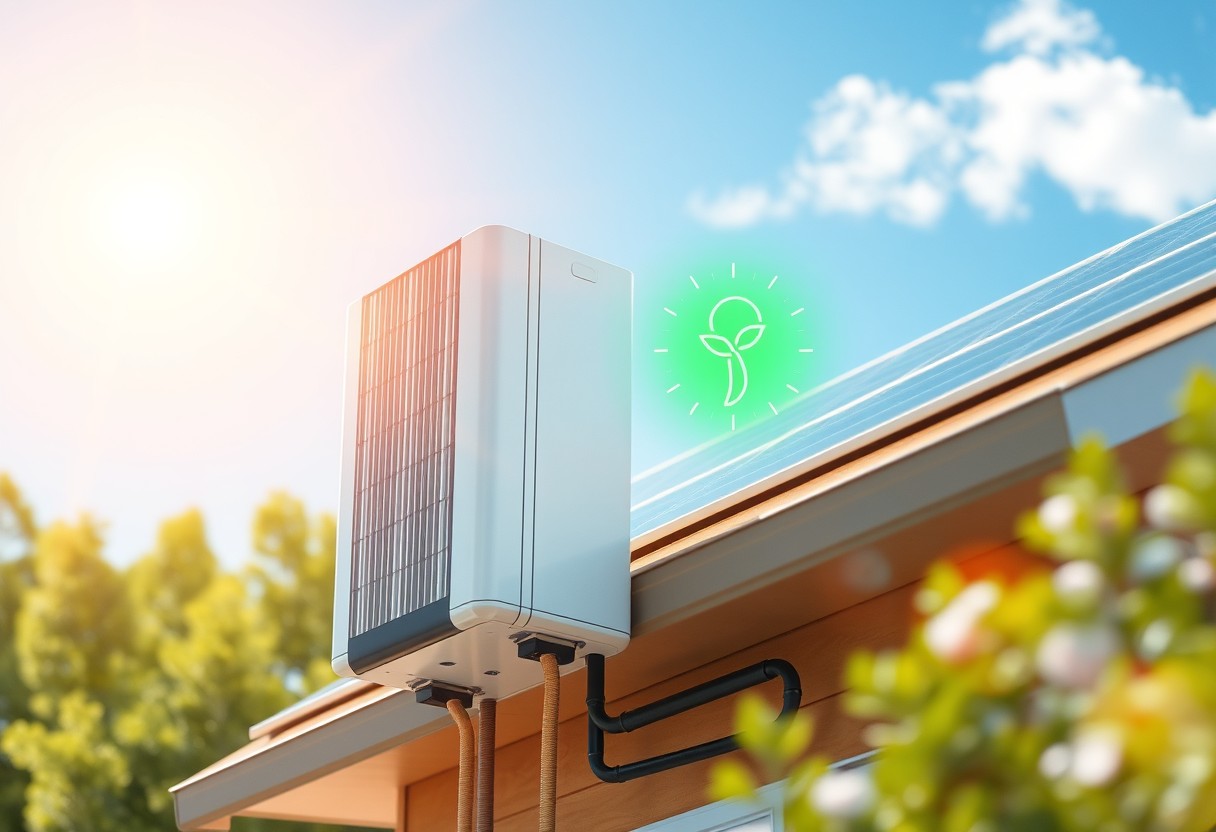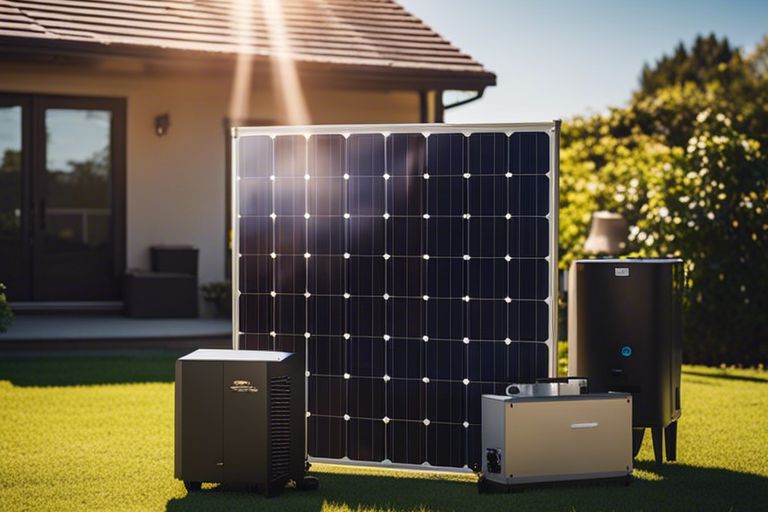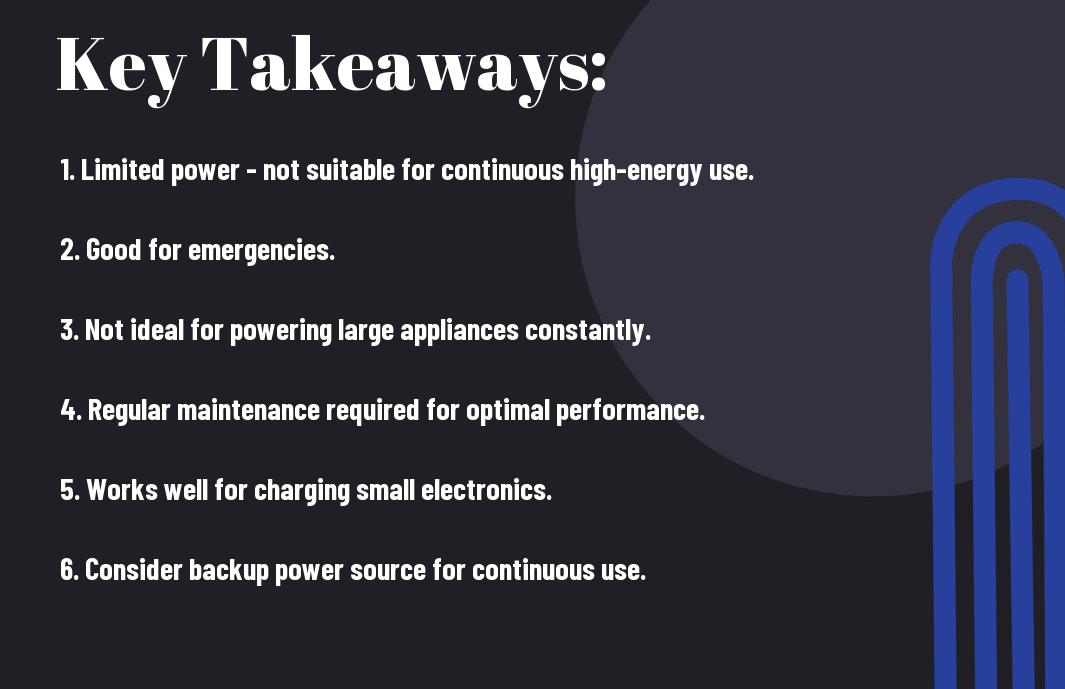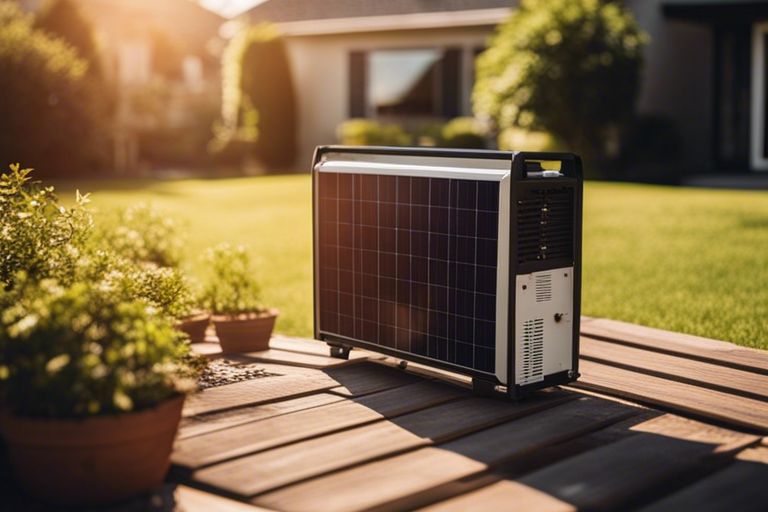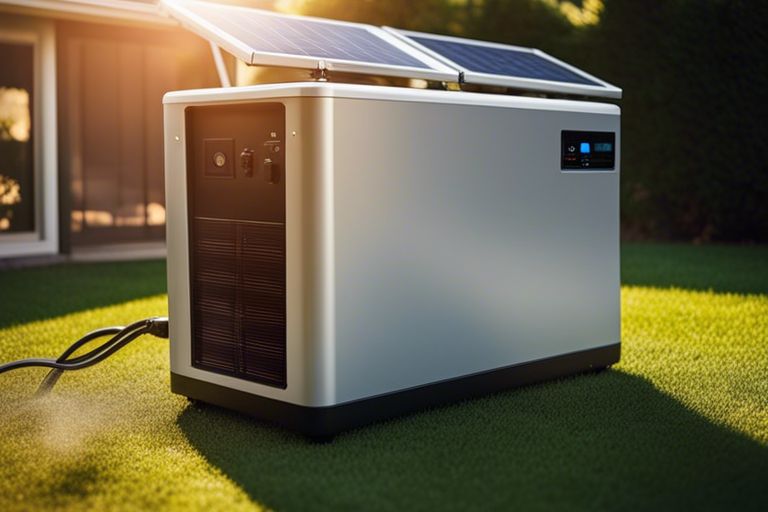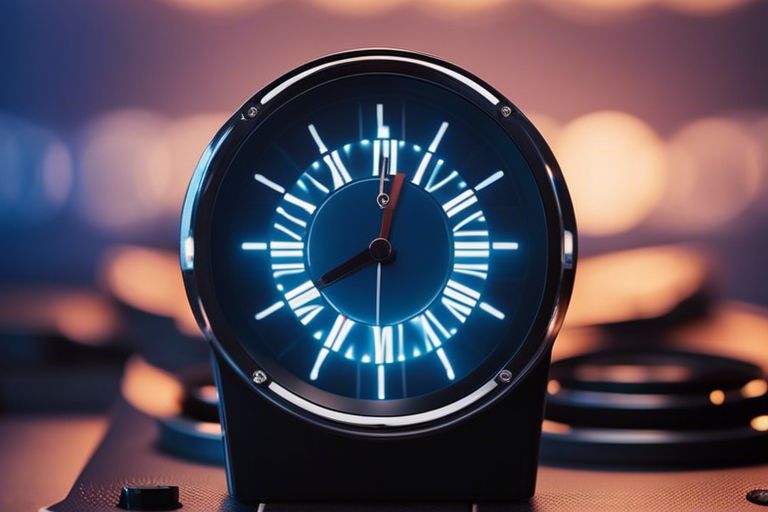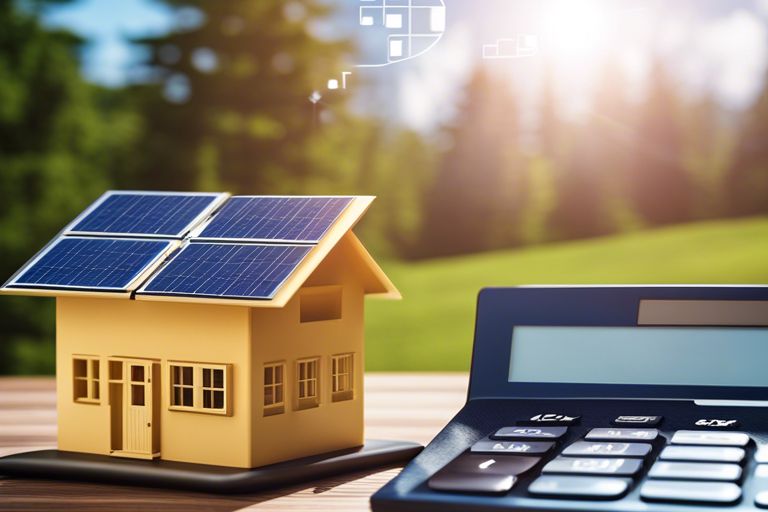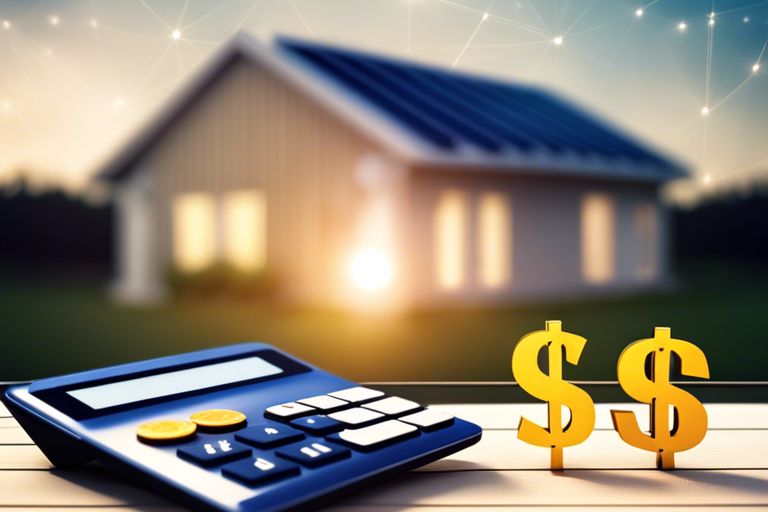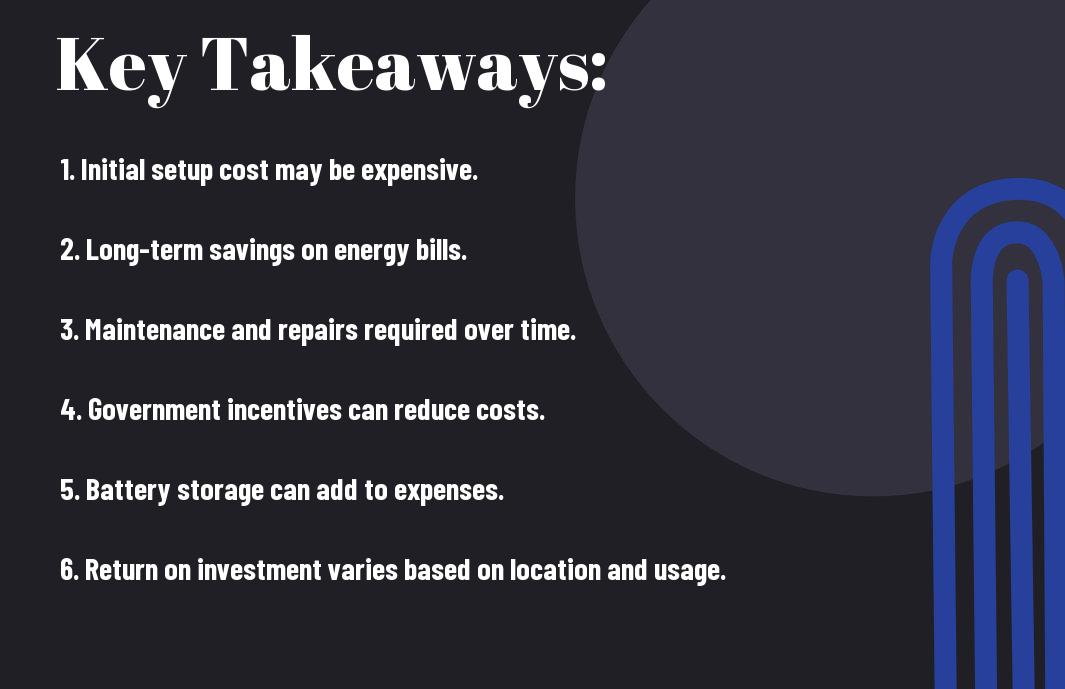Solar inverters play a crucial role in your solar energy system, converting solar power into usable electricity for your home. If you’re wondering whether you can leave your solar inverter on all the time, it’s important to understand its function and the implications of continuous operation. This blog post will provide you with vital insights into the performance of your inverter, its safety features, and best practices for managing its usage, ensuring that you make informed decisions for your energy needs.
Key Takeaways:
- Continuous Operation: Solar inverters are designed to run continuously, meaning you can leave them on without concern for damage.
- Efficiency: Keeping your inverter on all the time maximizes solar energy production and efficiency during daylight hours.
- Cooling System: Most solar inverters come with built-in cooling systems to manage heat, allowing them to operate safely for extended periods.
- Regular Maintenance: To ensure longevity, it’s crucial to perform regular inspections and maintenance even if the inverter is left on.
- Power Outages: Inverters can automatically shut down during power outages to protect the system; however, once power is restored, they will restart automatically.
Understanding Solar Inverters
Before stepping into whether you can leave your solar inverter on all the time, it’s vital to understand what a solar inverter is and its critical role in your solar energy system.
What is a Solar Inverter?
What you need to know is that a solar inverter is a device that converts the direct current (DC) electricity generated by solar panels into alternating current (AC) electricity. AC electricity is the form of electricity that is typically used in homes and businesses. Without a solar inverter, you wouldn’t be able to use the energy your solar panels generate effectively.
In addition to converting DC to AC, solar inverters also ensure that the electrical energy is stable and usable for your appliances. They play a vital role in optimizing the performance of your solar energy system by monitoring and regulating energy production, efficiency, and safety.
Types of Solar Inverters
There are several types of solar inverters available on the market, each designed to suit different needs and configurations of solar energy systems. The three main types are string inverters, microinverters, and power optimizers. Each type has its advantages and disadvantages, depending on your specific requirements and installation.
| Type | Description |
|---|---|
| String Inverter | Traditional inverter connected to a series of solar panels. |
| Microinverter | Small inverter installed on each solar panel for greater efficiency. |
| Power Optimizer | Works like microinverters but still connects to a string inverter. |
| Hybrid Inverter | Combines solar inverter functions with energy storage systems. |
| Off-Grid Inverter | Designed for systems not connected to the grid, typically with battery storage. |
For instance, string inverters are popular for their simplicity and cost-effectiveness, as they can serve multiple panels and are easy to install. On the other hand, microinverters offer independent performance optimization for each solar panel, making them ideal for systems with panel shading or complex roof layouts. Each of these inverter types has its unique features, which you should consider when evaluating what’s best for your solar energy system.
- String inverters are often the most economical choice.
- Microinverters can maximize energy output in less-than-ideal conditions.
- Power optimizers provide a balance between efficiency and cost.
- Hybrid inverters allow for energy storage and management.
- Off-grid inverters are suitable for remote locations without grid access.
Any decision on which inverter to choose should be based on your energy needs, budget, and the specifics of your installation.
The Role of Inverters in Solar Energy Systems
Inverters are not merely accessories in your solar energy setup; they are critical components that directly affect the efficiency and safety of your system. In essence, they are the bridge that allows energy generated from solar panels to be usable in your everyday life. With the increase in solar adoption, the technology behind inverters has significantly advanced, enhancing their reliability and functionality.
Furthermore, modern inverters come equipped with smart monitoring features, allowing you to track energy production, consumption, and overall system performance in real-time. Such capabilities help you maximize your solar energy usage and identify any potential issues before they become significant problems.
Types of inverters can dramatically affect the reliability and efficiency of your solar system. For example, hybrid and smart inverters not only convert energy but also manage battery storage, ensuring you can utilize solar energy even when the sun isn’t shining. Understanding these roles will help you make informed decisions when setting up or maintaining your solar energy system.
- Inverters ensure safe and efficient energy conversion.
- Smart inverters offer real-time monitoring capabilities.
- They are vital for maximizing solar energy usage.
- Hybrid inverters integrate battery storage for optimal energy management.
- Advanced inverters contribute to the longevity of your solar panel system.
Any choice in inverter technology should align with your energy goals and the overall configuration of your solar system.
Operational Considerations
While considering whether to leave your solar inverter on all the time, it’s necessary to understand how this decision can impact your energy production and consumption levels. Your solar system is designed to convert sunlight into electricity which can power your home or feed into the grid. By keeping your inverter running consistently, you maximize the potential output when sunlight is available. However, it’s equally important to ensure that your energy consumption does not exceed what your system is capable of producing consistently.
Energy Production and Consumption
Production directly relates to your solar panel’s ability to generate electricity based on sunlight availability, and this is severely impacted by factors such as weather conditions and time of day. If your inverter is turned off during daylight hours, you’ll miss out on the opportunity to harness sunlight effectively. Therefore, you can optimize your energy usage and production by leaving your inverter on and monitoring it throughout the day to maximize its efficiency.
On the other hand, you should consider your overall energy consumption patterns. If your household demand exceeds what your solar system can reliably provide, you might need to think about energy storage solutions, or grid connection for when your system is unable to meet your needs. Managing the balance between production and consumption is key to ensuring that your solar system functions effectively.
Inverter Performance and Efficiency
Operational efficiency is vital when deciding on whether to keep your solar inverter on all the time. An inverter works by converting the direct current (DC) generated from your solar panels into alternating current (AC) that can be utilized in your home. If your inverter is well-maintained and operating effectively, it will exhibit a high level of efficiency in this energy conversion process. This efficiency is crucial for maximizing your system’s energy output.
Understanding your inverter’s performance can help you make informed decisions about its operation. Factors such as temperature, load conditions, and ambient environments can dramatically affect efficiency. By keeping your inverter on continuously, you create the conditions for optimal performance during peak sunlight hours. However, it’s also important to monitor its performance regularly to ensure that it’s operating within its designed parameters.
Monitoring and Maintenance of Inverters
To ensure your inverter remains operational and efficient, regular monitoring and maintenance are necessary. This includes checking for updates related to its performance, cleanliness, and potential fault codes. Many modern inverters come equipped with monitoring systems that allow you to check your power output in real time. By staying vigilant about these aspects, you can spot and rectify any issues quickly, ensuring that your energy production does not inadvertently drop.
Inverters play a critical role in your solar system, transforming energy from solar panels into usable power for your home. To maintain optimal operation, make it a habit to inspect your inverter regularly and perform necessary maintenance tasks such as cleaning and firmware updates. These efforts can help extend the lifespan of your inverter, ensuring that your solar energy system continues to function at peak performance for many years.
Safety and Regulations
To ensure the safe operation of your solar inverter, it’s imperative to understand the safety standards set forth by electrical authorities as well as any local regulations that may apply. These guidelines help maintain not only the functionality of your solar energy system but also your personal safety and that of your property. Additionally, being aware of warranty implications can save you from unexpected expenses should any issues arise with your inverter.
Electrical Safety Standards
One of the key aspects of using a solar inverter safely is compliance with electrical safety standards. These standards, typically provided by organizations such as the National Electrical Code (NEC) in the United States or International Electrotechnical Commission (IEC) globally, ensure that electrical installations are carried out in a manner that minimizes risks. Adhering to these safety standards can significantly reduce the risk of hazards like electrical fires, shock hazards, and equipment damage. By keeping your solar inverter operational continuously, you must ensure it meets these standards for safe performance.
Local Regulations and Guidelines
Regulations regarding solar energy systems can vary significantly based on your geographical location. Many municipalities have specific building codes, interconnection standards, and zoning laws that dictate how you can operate solar equipment, including inverters. To avoid potential penalties or issues during inspections, you must familiarize yourself with your local regulations before deciding to keep your inverter on continuously.
Safety inspections may be a requirement in your area, and adhering to local guidelines can facilitate a smoother approval process for your solar energy system. It’s wise to consult with local agencies or a licensed electrician to determine any specific regulations that may impact how you operate your inverter.
Warranty Implications
Electrical safety and local regulations also play a significant role in the warranty of your solar inverter. Many manufacturers include specific requirements about operation conditions in their warranty clauses. If you run your inverter outside of these specified conditions or local safety regulations, you risk voiding the warranty. Thus, it’s imperative to examine your warranty documentation thoroughly to understand how continuous operation might affect it.
It’s equally important to realize that some warranties may contain provisions that require professional installation and regular maintenance. Failure to adhere to these guidelines could lead to costly repairs or replacements that won’t be covered under warranty, potentially impacting your overall investment in solar energy.
Benefits of Continuous Operation
For many solar energy users, the question of whether to leave your solar inverter on all the time can lead to some uncertainties. However, the continuous operation of your solar inverter presents several significant advantages that can enhance your overall solar experience and efficiency. By considering these benefits, you can maximize the return on your investment in solar power and ensure that your system operates optimally.
Maximizing Energy Production
Continuous operation of your solar inverter helps in maximizing energy production by ensuring that your solar panels convert sunlight into electricity all day long. When the inverter operates around the clock, it minimizes downtime in energy conversion, allowing you to harness maximum sunlight and create more energy for your household needs. This is particularly beneficial during peak sunlight hours when you can produce the most energy possible.
This consistent performance ensures that your system is always ready to respond to changing weather conditions. If clouds pass by or if the sun appears, your inverter can quickly adjust to these variations, optimizing energy production when conditions are favorable. This responsiveness directly contributes to your overall electricity savings and enhances the return on investment from your solar energy system.
System Monitoring and Data Collection
The continuous operation of your solar inverter also enables comprehensive system monitoring and data collection. Keeping your inverter on allows it to consistently track your system’s performance metrics, including energy generation levels and any potential issues that may arise. You benefit not only from real-time performance data but also from the historical data that can inform you about trends in energy production and system efficiency over time.
A continuous operating system means that you can quickly identify and address discrepancies or malfunctions, ensuring that your solar system runs as efficiently as possible. The ability to access this vital information can lead to more timely maintenance and improved performance, extending the longevity of your investment.
Longevity of the Inverter
Longevity is another crucial benefit of keeping your solar inverter on all the time. Operating your inverter continuously allows it to maintain optimal performance levels. When you power it down frequently, it may require additional startup time to reach its optimal operating condition, which can lead to wear and tear on the components over time. By allowing the inverter to run continuously, you not only improve its operational consistency but also extend its lifespan.
This consistent operation can help mitigate the risk of component failure. Inverters that are powered off and on may experience more stress during startup, which can adversely affect their longevity. By minimizing the wear and tear that results from frequent cycling, you are likely to enjoy a longer lifespan and reliable performance from your solar inverter.
Downsides of Continuous Operation
Your solar inverter is designed to convert the direct current (DC) produced by your solar panels into usable alternating current (AC) for your home. While it may seem convenient to leave your inverter on all the time, there are some downsides to consider. Understanding these potential issues can help you make an informed decision about the operation of your solar system. If you’re curious about more practical scenarios, check out discussions about How long do you leave your system unattended?.
Potential Overheating Issues
For most solar inverters, continuous operation can lead to overheating, especially during hot weather or prolonged use. Inverters are generally equipped with cooling systems, but if the device is consistently active, it may not have enough time to cool down. Overheating can reduce the efficiency of the inverter and may even cause permanent damage, resulting in costly repairs or replacement. It’s crucial to monitor the temperatures of your inverter and be proactive in addressing excessive heat.
For maintaining optimal performance, manufacturers often recommend allowing the inverter to operate within a specific temperature range. If your inverter does overheat, you might notice a decrease in energy production, which could ultimately diminish the benefits of your solar system. Therefore, regularly checking your inverter’s operating status and ensuring proper airflow can help mitigate these risks.
Wear and Tear on Components
For any piece of technology, continuous use can lead to mechanical wear and tear over time. Your solar inverter is no exception. The more an inverter is running, the more likely its internal components will suffer from degradation, reducing its lifespan. Common issues that arise from extended operation include failing capacitors and malfunctioning fans, which are crucial for optimal functioning.
This constant strain on your inverter’s components can lead to unexpected outages or decreased performance. To enhance the longevity of your system, you should consider scheduling regular maintenance checks and investing in quality components that are designed for long-term use. Understanding how operational habits impact wear on your inverter can ultimately save you both time and money.
Cumulative Energy Costs
Continuous operation of your solar inverter can potentially lead to increased cumulative energy costs. While solar systems are generally intended to be cost-effective, leaving your inverter on non-stop may inadvertently lead to unnecessary energy consumption, particularly if the system is operating beyond its intended requirements. If your solar panels are not producing enough energy to meet the demands of continuous operation, you will need to draw energy from the grid, thus increasing your energy bills.
With an appropriate understanding of your energy consumption patterns, you can effectively manage the state of your inverter and optimize performance to ensure minimal costs over time. By monitoring your system and adjusting its operation during low solar production periods, you can strike a balance that maintains your solar system’s efficiency without incurring unnecessary costs.
Alternative Operating Modes
Keep in mind that solar inverters often come equipped with alternative operating modes designed to enhance efficiency and prolong their lifespan. These modes are particularly useful when your solar panels are not generating enough power or during periods of low sunlight, helping you make the most out of your investment in renewable energy. If you’re curious about whether you should always keep your inverter running, check out the discussion on Always keep Inverter running? : r/SolarDIY.
Eco-Mode Settings
Any inverter equipped with eco-mode settings allows you to optimize its operation based on power consumption needs. In this mode, your inverter intelligently reduces its energy output, which can lead to significant energy savings. By activating this setting, you can minimize energy wastage when your solar power generation exceeds your household’s immediate needs.
Furthermore, eco-mode typically alters the inverter’s operational thresholds, which may involve switching off or intelligently managing non-necessary devices. This way, you can avoid overloading your system or drawing unnecessary power from the grid, ensuring a more sustainable energy use.
Night Mode and Sleep Functions
Settings such as night mode and sleep functions are integral to extending the operational life of your inverter. When sunlight fades, these features allow the inverter to either power down completely or enter a low-energy state, waiting for sunlight to return. This not only saves energy but also prevents the inverter from unnecessary strain when solar generation is not feasible.
Moreover, employing these functions can minimize wear and tear associated with continuous operation. Additionally, by entering a sleep mode during non-peak hours, the inverter conserves energy and can save you on operational costs in the long run.
Modes like night mode ensure that your inverter is not continuously drawing power during hours of inactivity, while sleep functions contribute to an overall increase in the system’s efficiency. This helps your solar energy setup maintain optimal performance over time.
Remote Control Features
EcoMode settings paired with remote control features enable you to monitor and manage your inverter’s performance from anywhere. By utilizing a dedicated app or interface, you can adjust your inverter’s settings, including which modes to activate or deactivate based on real-time energy needs without having to be physically near the unit.
This level of control allows you not only to tailor energy consumption but also to troubleshoot potential issues or system inefficiencies promptly. For instance, if you notice a drop in energy yield, you can easily switch modes or investigate causes through remote access.
Operating your solar inverter with these features gives you a hands-on approach to managing your energy consumption. You can quickly adapt to changing conditions, ensuring that your solar investment remains efficient and cost-effective.
Summing up
Ultimately, leaving your solar inverter on all the time is generally recommended, as these devices are designed to operate continuously. When your solar panels generate energy during daylight hours, your inverter converts that direct current (DC) into alternating current (AC) for use in your home or to feed back into the grid. By keeping your inverter on, you ensure that you are maximizing your solar energy production and making the most of your investment in renewable energy. Regularly monitoring your inverter’s performance and being aware of any alerts can help you maintain optimal function and efficiency.
However, there are instances when it may be appropriate to turn off your inverter, such as during significant maintenance or repairs. Always consult the manufacturer’s guidelines or reach out to a professional if you’re unsure. Making informed decisions about your solar inverter’s usage helps to enhance its longevity and reliability, ensuring that you reap the full benefits of your solar power system for years to come.
FAQ
Q: Can I leave my solar inverter on all the time?
A: Yes, it is generally safe to leave your solar inverter on continuously. Solar inverters are designed to operate efficiently and safely throughout their lifespan. However, it’s important to ensure that the inverter is in good condition and that all installation guidelines are followed. Regular maintenance and checks can help in ensuring optimal performance.
Q: Will leaving my solar inverter on affect its lifespan?
A: Leaving your solar inverter on continuously should not negatively affect its lifespan, as they are built to operate continuously in various conditions. However, extreme temperatures, moisture, and dust accumulation can lead to premature wear. It’s vital to maintain the unit and monitor conditions to ensure longevity.
Q: What happens to my solar inverter when there’s no sunlight?
A: When there’s no sunlight, most solar inverters will enter a standby or sleep mode. During this time, they do not consume significant power and will automatically restart to generate energy when sunlight is available again. This feature ensures that the inverter is always ready to operate when conditions are optimal.
Q: Can leaving my solar inverter on cause any electrical issues?
A: If your solar inverter is installed properly and maintained regularly, leaving it on should not cause electrical issues. However, if your inverter begins to show signs of malfunction, such as strange noises, overheating, or warning lights, it’s crucial to turn it off and contact a professional for assessment.
Q: Do I need to turn off the solar inverter during maintenance?
A: Yes, it is recommended to turn off your solar inverter before conducting any maintenance or inspection. This ensures safety and prevents any electrical issues while handling the equipment. Always consult the manufacturer’s guidelines or a professional before performing maintenance procedures.


